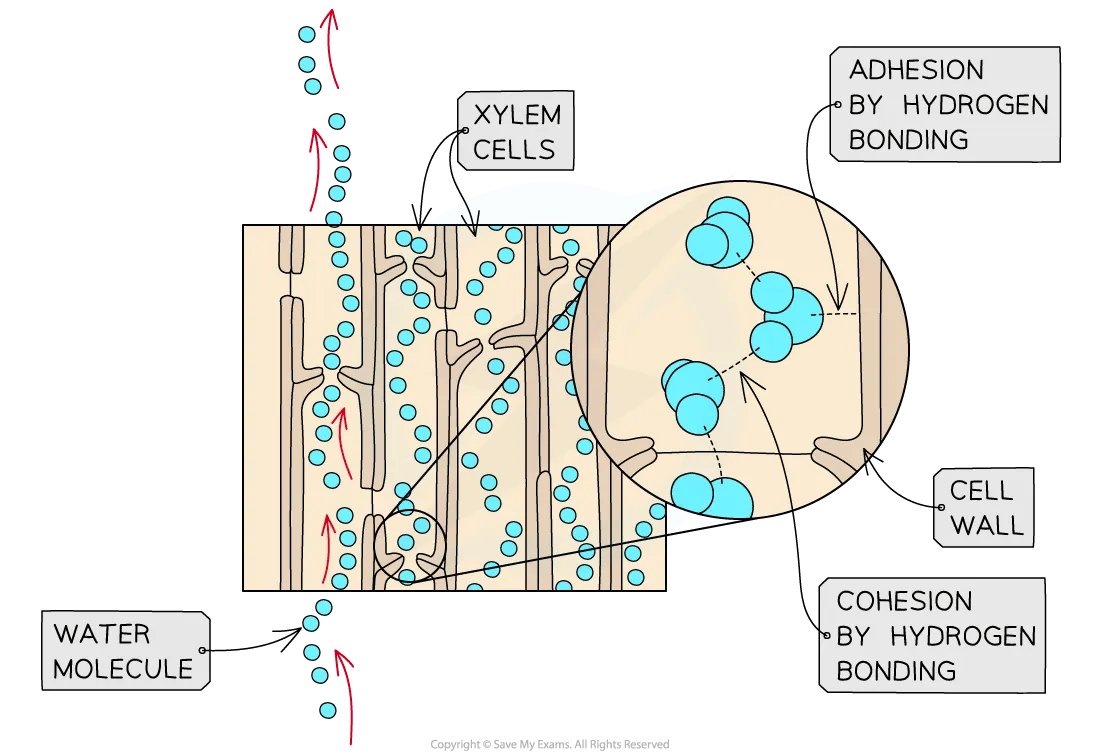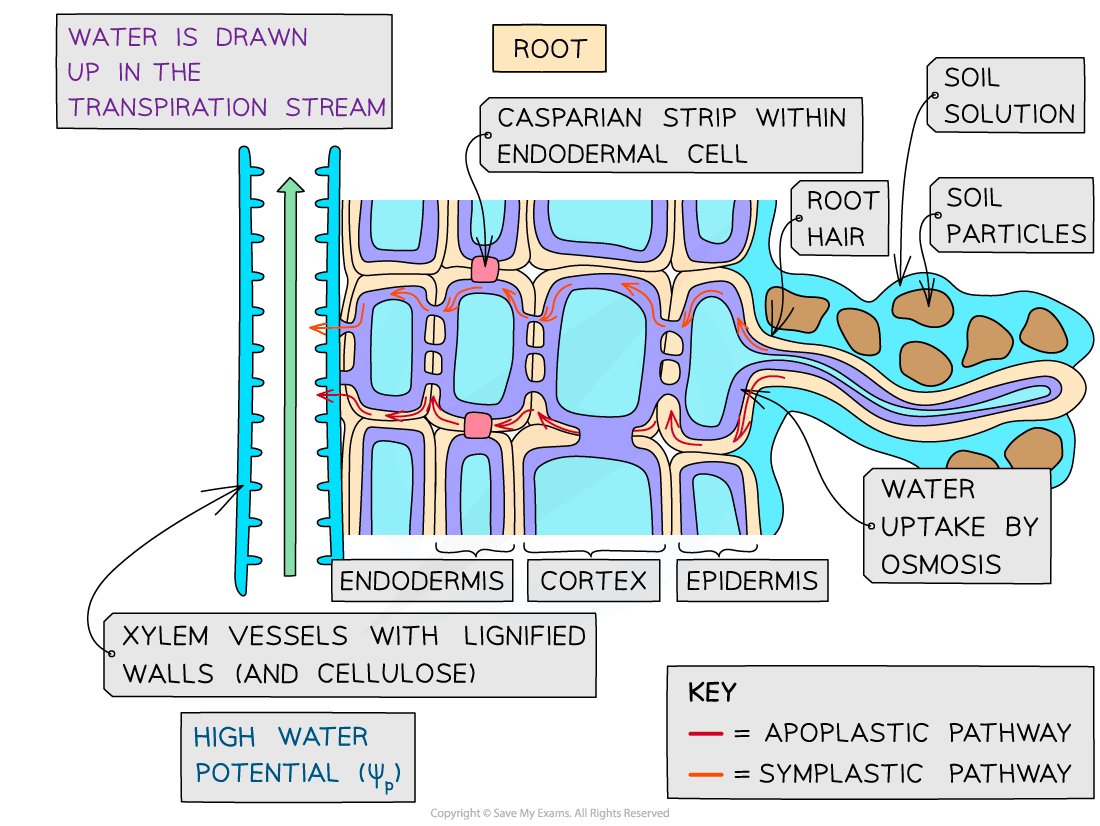Water & the Transpiration Pull (Cambridge (CIE) A Level Biology): Revision Note
Exam code: 9700
Water & the transpiration pull
The movement of water
The mass flow of water in a plant is helped by the polar nature of water
Hydrogen bonds (H-bonds) form between water molecules which results in cohesion between water molecules and adhesion between the cellulose in the cell walls and the water molecules
Water moves from the roots to the leaves because of a difference in water potential between the top and bottom of the plant
This gradient is present due to the constant loss of water from the leaves by transpiration and the constant uptake of water at the roots by osmosis
The evaporation of water into the air spaces in the leaves creates tension in the xylem tissue which is transmitted all the way down the plant because of the cohesive nature of water molecules
The cohesive force results in a continuous column of water with high tensile strength (it is unlikely to break) and the adhesive force stops the water column from pulling away from the walls of the xylem vessels
This mechanism is called the cohesion-tension theory
Xylem vessels have lignified walls to prevent them from collapsing due to the pressure differences created by the mass flow of water down its water potential gradient

The transpiration stream
The pathway of the water from the soil through the roots up the xylem tissue to the leaves is the transpiration stream
Plants aid the movement of water upwards by raising the water pressure in the roots; this is known as root pressure
Water enters the roots down a water potential gradient from the surrounding soil
Root cells actively transport solutes (e.g. mineral ions) from the cells of the root into the xylem vessels; this lowers the water potential within the xylem
Water is drawn into the xylem by osmosis from the surrounding cells, thus increasing the water pressure (root pressure)
Water travels across the root either via the apoplast pathway or the symplast pathway
Note that water in the apoplast pathway does not cross cell membranes, so does not move by osmosis


Examiner Tips and Tricks
When answering questions about transpiration it is important to include the following keywords:
Water potential gradient (between leaves and roots),
Diffusion (of water vapour through the stomata)
Transpiration pull (evaporation of water from the mesophyll cells, of leaves, pulls other water molecules from the xylem tissue)
Cohesion (between water molecules)
Adhesion (between water molecules and cellulose within the cell walls)
Cohesion-tension theory (tension present in xylem vessels causes a continuous column of water and is due to cohesive and adhesive forces)
Osmosis (water moving via the symplast pathway across the roots and leaves)

Unlock more, it's free!
Did this page help you?